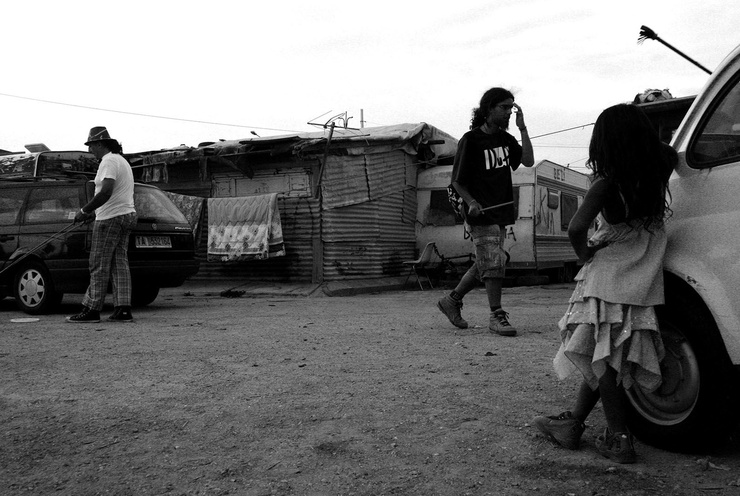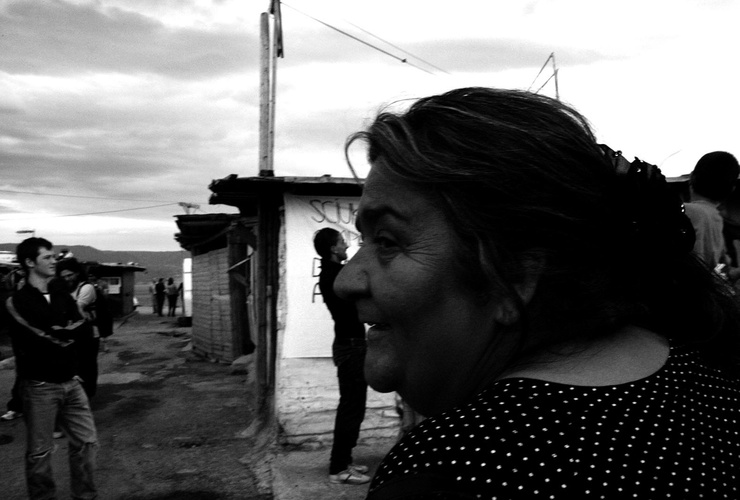
Suffocation of Roma and Sinti camps in Italy
Published on
Translation by:
 Lucy Knight
Lucy Knight
The latest chapter in the decade-long history of housing segregation of Roma groups in Italy occurred in Rome, where the city authorities have enacted measures that prevent the Roma from accessing social housing
Once again, a none too subtle technicality in the waiting list requirements denies Roma and Sinti citizens the possibility of leaving the ghettos to which they have been confined for three decades. Initially, the announcement published in December 2012 concerning the allocation procedure for social housing seemed to give hope to the 2, 500 Roma currently isolated in camps in the city. It stated that priority would be given to 'families in the most vulnerable situations, that is, in extremely poor housing conditions.'
A few days later, however, a clarification was issued: 'Applicants must be living in temporary shelters.' The Roma are therefore excluded, as their 'nomad camps' are considered to be permanent structures. With this development, the Rome city council led by mayor Gianni Alemanno seems to be following in the footsteps of previous councils. The infamous solutions introduced by previous mayor Walter Veltroni included the clearance of old sites and the construction of 'solidarity villages'. Alemanno's nomad plan comes as a finishing touch to this, with its armed patrols and video surveillance of camps, always warily located on the margins of the city. Piano Nomadi di Alemanno
Roma: an Italian anomaly
The authorities maintain the Italian anomaly of 'Roma camps' or 'nomad camps', halfway between ghetto and detention centre, where freedom is closely monitored. Introduced in the 1960s as part of an improvised and hasty response by local authorities to small-scale internal migration and further expanded in the 1980s, nomad camps have become a standard template for a geographical marginalisation that has made prejudice its founding narrative. Moreover the term 'nomad' has little to do with the real living preferences of the Roma or Sinti groups.

There are around twelve million Roma in Europe and approximately 140, 000 in Italy, according to the most reliable sources. Alongside stories of professional and economic success (in which those concerned have hidden their origins to avoid discrimination), there are groups of extremely poor Roma who are easily recognisable and therefore become targets for violence and prejudice. They are often referred to simply as 'gypsies', but the Roma and Sinti are in fact groups with many differences and rich histories, and a presence in Europe dating back at least 600 years. These groups are often anything but nomadic: 80% of European Roma and Sinti are settled. In Italy, the majority of Roma and Sinti have been permanently settled for more than a century, and at least 80, 000 have Italian citizenship. Others come from the former Yugoslavia, Bulgaria and Romania, having fled war and poverty.
Read My beautiful camp: Italy's Roma success stories on cafebabel.com
These groups are categorized as 'nomads' based on vague, incorrect ideas. They are segregated in camps irrespective of their origin, language and religion. The poorest Roma are deprived of the possibility of obtaining a decent place to live, and are forced to live in ad hoc enclosures with restrictions on their personal freedom that are simply unjustifiable in a state subject to the rule of law. Measures include curfews and the recording of fingerprints.
Nomad camps in Italy and Europe
In almost all cases, the 'nomad camps' are managed by groups acting as mediators. These are aoften charities or religious groups which have been reticent about calling for a complete change to this inhuman living solution. In these nowhere camps, which are arbitrary in the extreme, living conditions vary from one place to the next, as do the procedures for contributing to costs. Thirty years of ad hoc services that foster dependency, even where provided by motivated and capable organisations, have widened the gulf between the Roma and the rest of society. In this context, the 'innovations' proposed in Alemanno's nomad plan, such as making social services the responsibility of the red cross and setting up facilities inside the camps for educational purposes, seem to further heighten the separation between the Roma and the Romans.

In Italy, there are few examples of housing policies for Roma and Sinti that provide an alternative to the nomad camps. However a few disparate cases, including those seen in Venice, Padua and Bologna, do demonstrate that a place to live with dignity is a vital part of integration. Sadly these limited success stories are still far from being adopted as reference models in the context of a consistent national strategy.
Another straightforward possibility would be to take inspiration from certain other European countries, where the Roma 'problem' has been well-managed thanks to decisions made based on guaranteeing equality. In Spain, for example, Roma who are less well off can live in social housing alongside other disadvantaged citizens. In Germany, a law recognizes the Roma as a 'national minority'. This latter legality is in direct contrast to the situation in Italy, where law 482 (legge 482) of 15 December 1999 excludes the Roma and Sinti from the twelve formally recognized linguistic minorities, thereby preventing these groups from accessing essential resources.
Something may be about to change in the Italian political landscape. It took time to form a new government and there was no hint if the next elected representatives of Italy would want to take serious action on Roma living conditions - but there is still hope for Italy. The newly-elected president of the Italian parliament's lower house, Laura Boldrini, has spoken out about the need to include the Roma in Italy's recognised minorities, promote awareness of their history and allow them access to social housing rather than Roma camps. Integration cannot exist without an end to segregation.
Images: © puffodrax/ flickr
Translated from Rom in Italia: bersaglio (im)mobile


